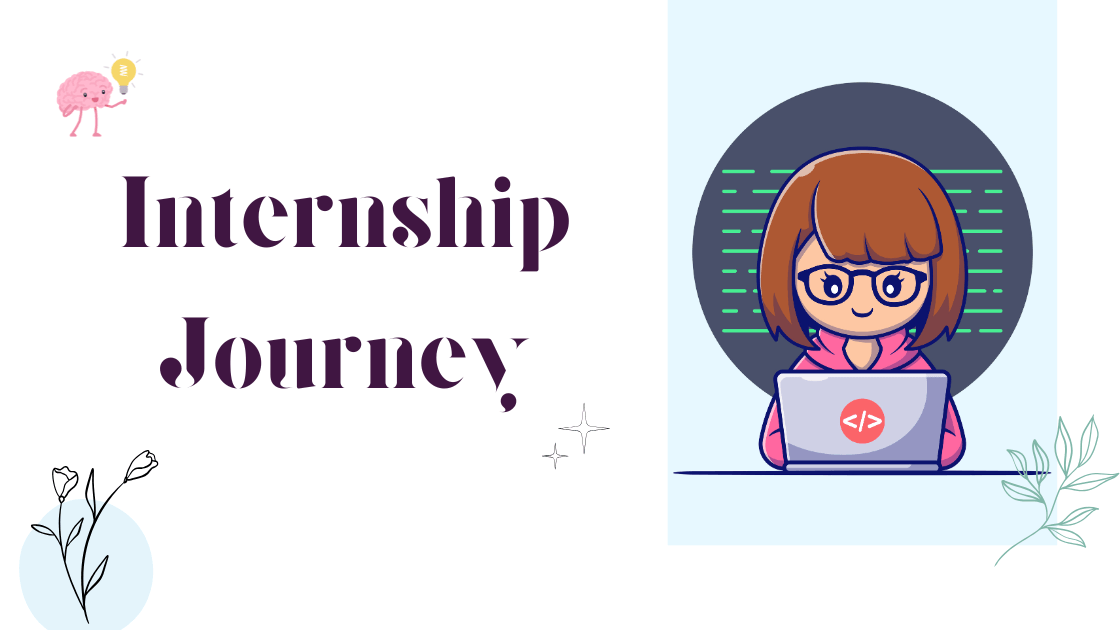From Hesitant to Hands-On: My Full-Stack Internship Story

Introduction
When I first dipped my toes into web development, I didn’t really know what I was doing. My coding journey started with a lot of copy-pasting, tweaking things randomly, and hoping it worked. Debugging? A nightmare. Understanding how everything connected? Even worse. But as time passed, those confusing lines of code slowly started making sense.
Today, I’m no expert, but I’ve moved from blindly following tutorials to actually building, optimizing, and understanding websites. This blog is about that transformation—the challenges, the small victories, and the lessons that shaped me.
The First Step: A Virtual Internship & Learning the Basics
Like many beginners, I started with a virtual web development internship at CodSoft. At first, I relied heavily on ChatGPT, YouTube, and online resources to complete tasks. The goal wasn’t to build something revolutionary—it was just to make things work.
During this internship, I worked on:
- A Calculator – My first real project, where I learned basic JavaScript functions.
- A Landing Page – Where I finally understood how HTML, CSS, and layouts worked together.
- A Portfolio Website – This was where things clicked. I had to modify existing code, experiment with designs, and debug errors myself.
What I learned: Coding isn’t just writing lines of code—it’s about breaking problems down, debugging, and making things work efficiently.
Leveling Up: My Full-Stack Internship at Unileaf
After getting comfortable with the basics, I landed a Full-Stack Development Internship at Unileaf. Here, things got real.
SEO & Content Optimization:
I researched and wrote an in-depth blog post:
- WordPress Backup Plugins: 10 Best Free & Paid Choices I wasn’t just coding—I was learning how to research, analyze, and create content that helps users.
Website Performance & Analytics:
I started using Google PageSpeed Insights to optimize website performance, making data-driven improvements instead of guessing.
Git, GitHub & Jekyll:
I built and deployed projects using HTML, CSS, Jekyll, and GitHub Pages, gaining hands-on experience with version control and static site generation.
Design & Branding:
I also worked on improving content visuals using Canva, ensuring brand consistency across blogs.
What I learned: Web development isn’t just about writing code—it’s about making things user-friendly, searchable, and visually appealing.
Challenges, Growth & What’s Next?

Challenges I Faced:
- Setting up Jekyll for my portfolio blog.
- Understanding SEO beyond just keywords—optimizing content for search engines and real users.
- Debugging issues that had me staring at the screen for hours.
How I Overcame Them:
- Breaking big problems into smaller ones.
- Reading official documentation instead of only relying on random tutorials.
- Testing things hands-on instead of just memorizing concepts.
What’s Next?
- Refining my front-end skills and getting better at JavaScript.
- Learning more about backend development to build complete, full-stack applications.
- Writing more blogs, sharing my experiences, and helping others who are on this journey.
Conclusion
A year ago, if you had told me I’d be managing websites, writing SEO blogs, and debugging my own projects, I would have laughed it off. But here I am—still learning, still struggling, but undeniably growing.
Web development is less about how fast you learn and more about how persistent you are. Some days, you’ll feel like you’re making huge progress; other days, you’ll want to throw your laptop out the window. And that’s okay.
To anyone on a similar journey—keep pushing. Every line of code you write, every bug you fix, every moment of frustration—it all adds up. One day, you’ll look back and realize how far you’ve come.